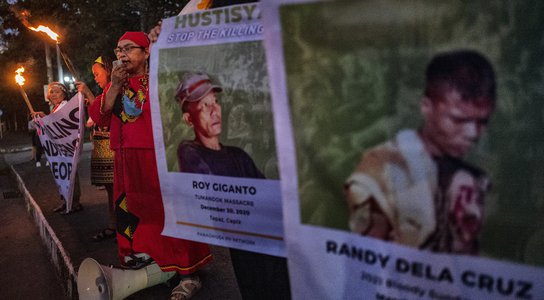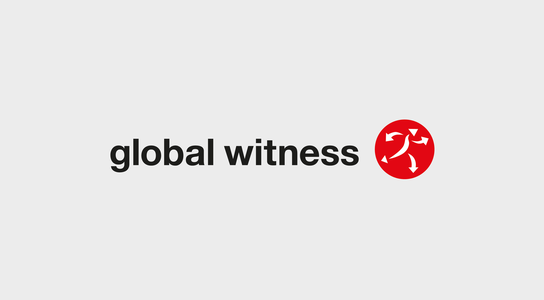Recent films such as Don't Look Up, The Territory and Invisible Demons want to motivate us to make social change and take actions to protect the environment and human rights. Luiza Paiva, film producer, explores how films can really achieve impact in the world.
Films have always been a great medium to inspire or serve as a tool for societal change. They can also make audiences experience different kinds of emotions, expose them to new perspectives, and most importantly they can serve as a medium for filmmakers, producers and communicators to bring more awareness to certain issues or causes, helping to change the hearts and minds of people regarding urgent topics.
As discussions around the impact of climate change have become increasingly important and urgent, films and media outlets have been reporting ever more stories around this topic, with some experts and scholars referencing our current era as the “Anthropocene”, a term used to describe the most recent period in Earth’s history when human activity started to have a significant impact on the planet’s climate and ecosystems.
One recent example of a film that explores these issues is the Oscar candidate for best Original Screenplay, Best Picture, Music and Editing, Don’t Look Up. Directed by Adam McKay and starring Leonardo Di Caprio, Jennifer Lawrence, and Meryl Streep, the controversial satire tells the story of two astronomers who must go on a giant media tour to warn mankind of an approaching comet that will destroy planet Earth, reaching out to a global audience.
Another example is the film Invisible Demons which was part of the Cannes Film Festival line-up as part of a climate-themed sidebar and the BFI Film Festival (2021). Directed by Rahul Jain (Machines), the director himself returns to Delhi, India, to explore the dramatic consequences of India’s growing economy through stunning visuals, capturing not only a city in crisis but magnifying our collective climate reality.
This year’s Sundance Film Festival has also dedicated a programme to Indigenous filmmakers, and has displayed films made or co-produced by people from Indigenous communities. One example is the documentary The Territory Directed by Alex Pritz, the film is made in co-production with Uru-eu-wau-wau Indigenous Peoples from Brazil, and immerses the audience in a community of land and environmental defenders located in the Amazon rainforest who have faced several attacks by farmers, miners and settlers. The film sensitively treats both the climate and human emergency with the necessary urgency.
Communities themselves who have been directly experiencing the effects of climate change in their daily lives are also using social media and cinema as tools to report issues faced by them. In this way, these outlets act as activism and social change platforms, raising awareness to topics that often have no space in the mainstream media. Important examples of these actions can be found in collectives working within their own communities to denounce what is happening to their territories.
The Munduruku Women’s Collective from Brazil is one example of these initiatives. Led entirely by women, this collective has been producing films and important campaigns to denounce illegal activities in their territories, also highlighting the effects of climate change suffered by their communities.

Aldira Akai Munduruku
According to Aldira Akai Munduruku, the fight for the protection of Indigenous Territories and land titling of Sawre Muybu and other territories in Brazil is urgent, reason why the collective develops audiovisual productions as a way to denounce the invasion of their land and illegal activities such as land grabbing.
By using powerful visuals and interviews with key community members, the collective aims to reach new international audiences and to help build a movement in support of the Indigenous fight to protect forests, especially during an important year of elections in the country. Their work is extremely important in a context where Brazil is one of the most dangerous countries in the world for land and environmental defenders, with 317 Brazilian defenders having been murdered from 2012-2020, according to Global Witness’s latest defenders report released in 2021.
“Our work is to show the importance of preserving the forest and to make new allies around the world, people that can support our community and others. We were influenced by a Journalist, who taught us to take pictures and film. We started learning more about how to make our own films, write scripts and to define which stories we needed to tell. Now our fight is to inform people through audiovisual about what is going on, to show how people are invading our territories and result of the illegal activities, deforestation. And the Indigenous women are fighting for their own space within our communities, also supporting our leaders and most importantly, telling stories that show now what will happen to the future of our children in the defence of the Munduruku peoples.” - Aldira Akai Munduruku
For these reasons, we believe multimedia and storytelling pieces can play a huge role in changing the world for the better, by helping to shine a light on the social and environmental changes we urgently need to see. This is especially true when members of the very communities which are suffering most heavily from threats and human rights abuses are the protagonists of these narratives, and are able to use these resources to report what is going on in their own territories and bring to our attention how audiences can play an active role in engaging with and contributing to these narratives of change.
Author
-
Luiza Paiva


